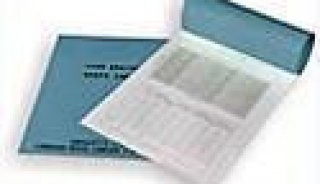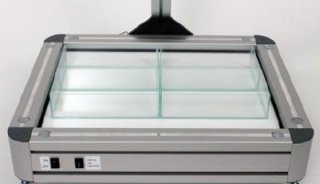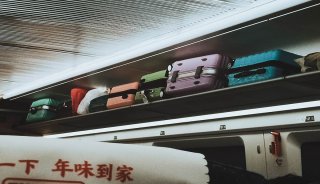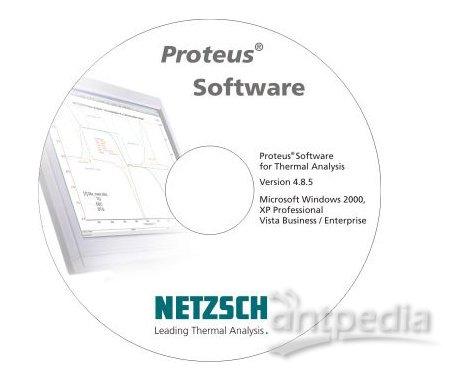TISSUE FIBROBLAST CULTURES FOR CHROMOSOME ANALYSIS
实验概要
Skin tissue may be used for chromosome analysis in special cases when the results from peripheral blood are inconclusive, e.g. suspected mosaicism, confirmation of a new chromosome disorder, or special dermatological disorders. Tissue may also be used when blood cultures are not available, such as on stillbirths.
The skin biopsy should be performed by a physician, with scrupulous aseptic technique. The biopsy site is thoroughly washed with an antiseptic soap and then wiped with 70% ethanol, which is allowed to dry before the biopsy is taken. Iodine and Mercurochrome-like antiseptics should not be used. Most physicians prefer to use a local anesthetic; this does not affect the success of the culture. A 4 mm punch biopsy should be taken and placed in a vial containing 8 ml of transport media (F-10, Eagle's, MEM, etc.). For cases of stillbirth, the preferred tissues are skin, fascia, kidney, and lung. The tube should be labeled with the patient's name and delivered to the cytogenetics lab without delay.
主要试剂
Solutions:
Colcemid working solution: 10 mcg/ml Colcemid in Hank's Balanced Salt Solution, store at 4 C.
Complete Nutrient Mix F-10: 100 ml Nutrient Mix F-10, 20 ml Fetal calf serum, 1 ml Penicillin/Streptomycin solution,
Glutamine solution-1 ml/L, store at 4 C.
Fixative: 30 ml Methanol and 10 ml Glacial Acetic Acid, prepared fresh.
Hypotonic solution 0.075 M KCl: 2.8 g Potassium chloride dissolved in 500 ml dH2O.
1X Trypsin-EDTA Solution: 10 ml stock trypsin solution (10X trypsin in saline), 0.1 gram EDTA (disodium salt), dissolved in 490 ml Hank's Balanced Salt Solution. Sterile filtered, 50 ml aliqots. Store frozen
Reagents:
Colcemid: GIBCO cat# 120-5210. 10 mcg/ml in Hank's Balanced Salt Solution, 10 ml bottle, store at 4 C.
EDTA: SIGMA cat# ED2SS. Ethylenediaminetetraacetic acid, disodium salt, dihydrate, 100 gram bottle.
Fetal calf serum: HYCLONE/STERILE SYSTEMS INC. cat # A-1111-D. defined fetal bovine serum 100 ml bottle, store frozen.
Hank's Balanced Salt Solution: GIBCO cat# 310-4170. Hak's Balanced Salt Solution, without CaCl2, MgCl2, MgSo4, 500 ml bottle. Store at 4 C.
Glacial Acetic acid: AMERICAN SCIENTIFIC PRODUCTS cat# 9508-2. Acetic acid, Glacial ACS (Aldehyde free), 500 ml bottle.
L-Glutamine: GIBCO cat#320-5030. L-Glutamine solution 100X (200 mM), 20 ml bottle, store frozen.
Methanol: AMERICAN SCIENTIFIC PRODUCTS cat# 3016-1. Methyl alcohol anhydrous AR (ACS)(Absolute) Acetone free, 500 ml bottle.
Nutrient Mix F-10: GIBCO cat#430-1200. Nutrient Mixture F-10 (HAM) powdered form, prepared to instructions, 10 x 1 liter package.
Penicillin/Streptomycin: GIBCO cat# 600-5140. Penicillin/Streptomycin solution, 10,000 units/ml / 10,000 mcg/ml, 20 ml bottle, store frozen.
Potassium Chloride: COLUMBUS CHEMICAL INDUSTRIES, INC. ACS granular, 500 g lots.
Trypsin Stock Solution: GIBCO cat# 610-5090. Trypsin 2.5% (10X) in saline. Store frozen.
实验步骤
1. Culture Procedure:
(1) Aseptic technique must be used when setting up the cultures, preferably under a laminar flow hood. For each type of tissue label 1 100 mm petri dish and 2 - 3 T-25 tissue flasks with the patient number, patient name, type of tissue, and date. Flasks should also be labeled (using greek letters) to identify primary cultures when flasks are sub-cultured; this allows for identification of cultural artifacts and psuedo vs real mosaicism.
(2) Cultures are grown in complete Nutrient Mix F-10. Media should be fresh (less than 4 days old) and be prewarmed and at pH 7.0 - 7.5. All cultures are incubated in a wet, 5% CO2 incubator at 37 C. All new cultures are to be placed in the "alien " incubator and checked the next day for contamination. Once cells are growing and determined to be aseptic, they are transferred to the "tissue culture" incubator.
(3) Using forceps transfer tissue to the petri dish, a sample 2mm x 2mm x 2mm is sufficient. If the sample is large, cut off a section. Add 0.5 ml of media to the dish. Using scissors, cut tissue into small bits, use clean strokes and avoid mashing or tearing the tissue. Add media so there is enough to transfer 2 ml into each flask and leave 2 ml in the dish. Gently rock the flasks to distribute the media. Screw the caps on loosely, and place the flasks in the incubator for 2 - 3 days for the tissue to adhere to the surface. Carefully add an additional 3 ml of media to each flask and 5 ml to each dish and return the cultures to the incubator.
(4) Cultures should be examined for growth after 4 days. When 5 to 10 colonies of 50 - 100 cells have formed, change the media by aspirating off the old media and gently adding 5 ml of fresh media. Cultures should be harvested as soon as there are sufficient cells (10 - 15 colonies of several hundred cells). Flasks from more than one primary culture and when possible, more than one type of tissue, should be harvested to maximize detection of mosaics.
2. Harvest Procedure:
(1) One to two days prior to the harvest the cells are dispersed in the flask to maximize the mitotic index.
(2) Aspirate the media out of the flask. Add 0.5 ml of prewarmed 1X Trypsin EDTA, gently rock the flask to distribute the trypsin over the surface. Incubate the flask for 20 - 30 seconds at room temperature (this is done to remove proteins from the media and complex anti-trypsin produced by the cells). Aspirate off the trypsin. Add 0.5 ml of fresh 1X Trypsin EDTA, incubate the flask for 1- 5 minutes at 37 C. Examine the flask on the microscope to determine if the cells have become detached from the dish, tapping the flask may be necessary to detach all the cells. Add 4.5 ml of fresh media to the flask. The culture may need to be split into 2 or 3 flasks, or may need to be transfered to a smaller petri dish depending on the number of cells. The flasks should be at 50 - 75% confluency. If culture is split, add media to bring each flask to 5 ml. Return the cultures to the incubator.
(3) The next morning change the media and check the cultures to see if they are ready for harvest. The cells should be near confluent and should show actively dividing cells. If the culture is not confluent enough wait until the next day to harvest.
(4) Add 0.3 ml of working colcemid solution to each flask. Incubate the cultures at 37 C for 2- 8 hours. Check the cultures after 2 hours to see if there are sufficient cells in mitotic arrest (cells will be rounded off and may be floating), if not, continue to incubate and check every half hour.
(5) When cultures are ready, remove media with a pipet and transfer to a labeled 15 ml conical centrifuge tube. Add 0.5 ml trypsin, incubate for 20 - 30 seconds. Transfer trypsin to the tube using a pipet. Add 0.5 ml of freah trypsin, incubate at 37 C for 4 - 5 minutes. Check on microscope to see if cells are detached. Add 2 ml of media to each flask, pipet up and down gently 3 - 4 times to remove any remaining cells from the dish and to form a single cell suspension. Transfer the media to the tube. Repeat this step with an additional 2 - 3 ml of media.
(6) Centrifuge the tubes for 6-8 minutes at 150 x g (900 rpm).
(7) Aspirate and discard all but 0.3 ml of supernatant. Resuspend the cell pellet by mixing by hand, do not use a mechanical vortexer as this may break the cells, this is especially important in step I. Add 3 ml of prewarmed hypotonic solution and mix. Incubate the tubes at 37 C for 8 - 10 minutes.
(8) Centrifuge the tubes for 6-8 minutes at 150 x g.
(9) Aspirate and discard all but 0.3 ml of supernatant. Mix by hand to break up the cell pellet. It is important to get the cell pellet completely resuspended, but the cells are fragile and easily broken.
(10) Slowly add 2 ml of fixative (1 pasteur pipetful) letting it run down the side of the tube so that it layers on top of the cell suspension. Cap the tube. Mix rapidly by hand so that all the cell suspension is fixed evenly; if it is mixed too slowly, clumps may form. Let sit at room temperature for 15 - 20 minutes.
(11) Prefix by carefully adding 1 pasteur pipetful of fix and mixing. Centrifuge immediately for 6 minutes at 150 x g.
(12) Aspirate and discard all but 0.3 ml of supernatant. Resuspend the cell pellet. Add 2 ml of fixative and mix. Let sit at room temperature 15 - 20 minutes.
(13) Repeat steps K,L 1 or 2 times until the pellet is clean and white. The culture is now ready to make slides. For best results, slides should be made the same day as the harvest.






















